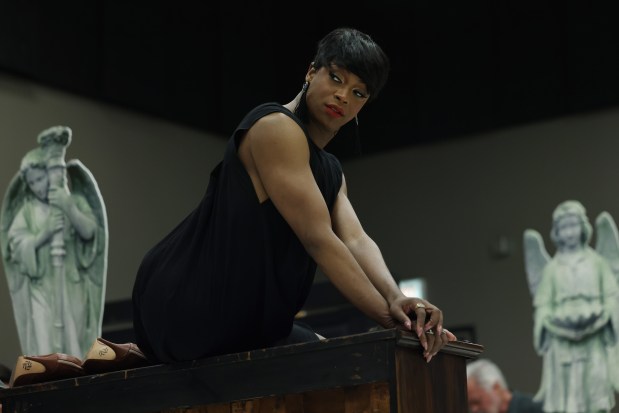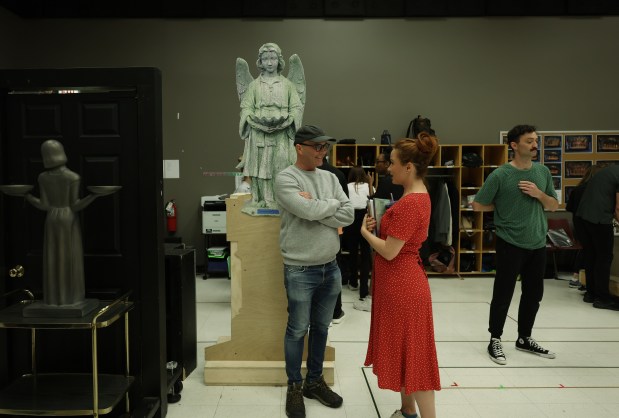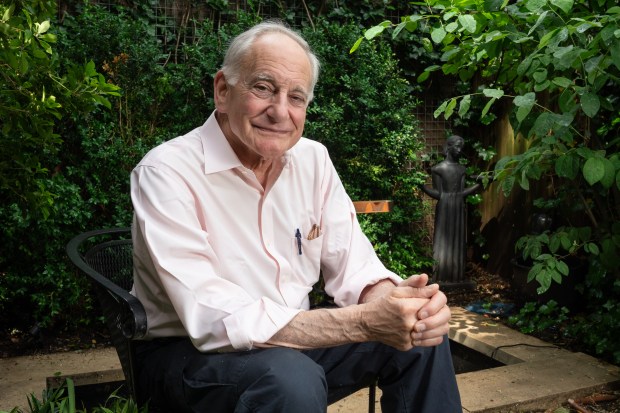NEW YORK — “I was beguiled by Savannah,” John Berendt wrote 30 years ago, having no idea at the time the influence that proudly isolated old city on the Georgia coast, the one Margaret Mitchell called “that gently mannered city by the sea,” would exert on his life. Nor, yet stranger, the influence he and his book, “Midnight in the Garden of Good and Evil,” would in turn come to have on Savannah.
Some within the coastal empire would say that Berendt, in concert with Clint Eastwood and Warner Bros., saved Savannah, if salvation can flow from tourist dollars, a restored urban core and an embrace of a juicy soupçon of murderous infamy.
How? It wasn’t that Berendt discovered or changed Savannah so much as he described its contradictions far better than anyone else: its shabby squares lined with impossibly gorgeous townhomes, its genteel embrace of Southern transgression, its intimate isolation, its intolerant tolerance, its disdain for the very different Charleston, South Carolina, its unique hold over both Old South blue hairs and blue-haired art students from the Savannah College of Art and Design.
Before “Midnight” became a phenomenally successful work of (mostly) non-fiction, lasting an astonishing 216 weeks on the New York Times bestseller list, and before it became a 1997 Hollywood movie staring John Cusack and Kevin Spacey, Savannah preservationists could rarely stop the wrecking balls aimed at the city’s heart.
“Midnight” changed everything.
Thereafter, and well into the 21st century, Savannah city guides helped hundreds of thousands of entranced tourists retrace Berendt’s steps through the Spanish moss in singer Johnny Mercer’s hometown from Monterey Square to Liberty Street, from East Charlton to East Jones, and from the maybe-murderous antiques dealer Jim Williams to the supremely self-confident transgender performer known, and soon to be reborn, as The Lady Chablis.
On Tuesday, the long-in-gestation Broadway musical version of “Midnight in the Garden of Good and Evil” begins its tryout performances at Chicago’s Goodman Theatre, with a score by Jason Robert Brown (“Parade,” “The Last Five Years”), a book by Taylor Mac (“Gary, A Sequel to Titus Andronicus”) and direction by the longtime Broadway director and choreographer Rob Ashford. The show, lead produced by Hal Luftig, Craig Haffner and Sherry Wright, is expected on Broadway next spring and that of course raises some questions not just of how well Berendt’s book will translate to the genre of the Broadway musical but, just as importantly, how it will play some 30 years after its writing.
Even The Lady Chablis, who enjoyed her sudden international fame, insisting on playing herself in the Eastwood movie and who will now be interpreted by the Tony Award-winning actor J. Harrison Ghee, died in 2016. Most everyone else significant in the story is dead now, too. The last important one went just a few months ago.
In the book, Lady Chablis (“her hair was short and her skin was a smooth milk chocolate”) is one of many colorful Savannah characters whose personas inhabit Berendt’s vividly drawn chapters, almost all centered on compelling people. In the musical, though, she will be the narrator of the entire story; a replacement, really, for Berendt’s own authorial voice.
Even before this musical, Lady Chablis, thanks to “Midnight,” had perhaps become the first openly transgender person to become internationally famous, certainly if one was talking about a denizen of the American South. What will happen after the musical? Time will tell, although there is more there is more than enough evidence in the book to suggest the real-life Lady Chablis would have been delighted by any and all posthumous attention. (“I’m a beauty queen, you know,” she tells Berendt. “I have been crowned in four beauty pageants. I’ve got titles, lots of them. Right now you are looking at the Grand Empress of Savannah”).
The book’s (and film’s) success has allowed Berendt, a genial, hospitable and inquisitive man who retains his handsome looks at the age of 84, to acquire a tall and beautiful townhome on New York’s Upper West Side with enough levels to provide an ample workout entirely within its own footprint and a home decorated with, well, a whiff of Savannah style, although that might be a visitor’s projection. One might call this abode the house that “Midnight in the Garden of Good and Evil” built, except that unfairly diminishes Berendt’s early journalistic successes, including a stint as editor of New York magazine and a columnist for Esquire.
“Midnight in the Garden of Good and Evil” is in some ways a Stateside version of Peter Mayle’s bestselling travelogue-memoir, “A Year in Provence,” an ode to the expatriate life in a French region renowned for its food, wine and sensorial quality of life. After being initially beguiled by the town, Berendt half-moved to Savannah and, over some seven years, conducted interview after interview with multiple local characters: Jim Williams (to be played by Tom Hewitt), Emma Kelly (Sierra Boggess), who Berendt called “the Lady of 6,000 Songs” and, of course, Her Ladyship. “I would inquire, observe and poke around wherever my curiosity led me or wherever I was invited,” Berendt wrote of his modus operandi. “I would presume nothing. I would take notes.”
But in the middle of that project, which Berendt thought might be good for a column or two, Williams, an enigmatic socialite, party-thrower and antiques dealer, got arrested for the shooting and killing of 21-year-old Danny Lewis Hansford, his part-time assistant and sometimes lover. Suddenly, Berendt wasn’t just writing a curious outsider’s travelogue but a true crime story — with a distinctive stew of dramatis personae and a narrator caught helplessly in their thrall.
“I was fascinated by the quirkiness of Savannah’s characters and their willingness to be a little off-balance,” Berendt says, settling into his chair on a late May afternoon, eyes twinkling a bit as his mind moves back through the years. “Savannah is a place where people are good storytellers and love to talk. And what do they love to talk about? Other people. They talked about everyone else in town. So the quirky people thus were encouraged to be even quirkier.”
Williams is the book’s leading character, a raconteur of epic talents and a one-man encapsulation, Berendt posits, of Savannah’s contradictions and appeal. “Jim knew what delighted me,” Berendt says. “There were so many elements of Jim’s identity that nobody really talked about. Everybody knew he was gay; they flattered themselves that they had allowed a gay man to be at the center of society, a man who threw the best party of the year in Savannah,” (followed by another, more secretive affair for “gentlemen only”), a hosting tour de force that numerous trials for murder did not squelch.
In the book, Williams gets the early pages all to himself, coming even before Berendt’s explanation of his purpose and lasting until almost the final page, when the antique dealer and killer drops dead on his front stoop at the age of 59, presumably from a heart attack. But who knows, really? Jim cooperates with the book throughout, revealing everything and nothing. “He told to me as much as he could,” Berendt says, eyes twinkling again as he intimates how much he knew of him, and about him. “I even got on with his lawyers and there was a swarm of them.”
“I had read “My Year in Provence,” the director Ashford, the show’s guiding force, says some days later in a rehearsal room at the Goodman Theatre. “John didn’t just tell us this story of wandering through the streets and gardens, he incorporated a murder mystery and introduced us to many quirky people of Savannah. I decided that Savannah really couldn’t just be a location or a backdrop. Rather, we have to show Savannah. The characters are all real people and I think that, as a result, the actors are even more committed to telling their truths.”
The composer Brown is a dominant presence in a rehearsal room, far more so than composers of lesser stature. While in Chicago, his cast says, he has been furiously writing and cutting songs, adding to the score during rehearsal, usually beginning by playing them himself for the actors and musicians at the Goodman even as they try to keep up. Ghee’s Lady Chablis arrives on top of a piano during one number and the show is filled with rich, juicy lyrics: “If you’re wearin’ a big hot monkey on your back, just shed it. If there’s junk in the trunk of your funky Cadillac, just shed it. If you’re showin’ your shame ‘cause the tax man came and he won’t let you pay on credit. Bring your sad sad story to the shed shack.”

“Kinky Boots” changed my life,” Ghee says in an interview a few minutes later, referencing the much-loved Jerry Mitchell musical that began in Chicago with Billy Porter, but whose role Ghee later assumed on tour and elsewhere. Most recently, Ghee, a non-binary actor, won a Tony Award for “Some Like It Hot” on Broadway, a recognition of an astonishingly energetic performance in a frenetic, big-city caper show about as far removed from a Savannah rhythm as one could imagine.
“Chablis is freedom and I am in,” Ghee says, simply enough. “She is the epitome of truth and responsibility. It’s in the contract that every time you see her, she should have on a new persona.” (That certainly matches what Berendt wrote: “‘What’s your full name?’ ‘The Lady Chablis,’ she said. She turned sideways in the seat, pulling her knees up and leaning back against the door as is she were sinking into a luxurious sofa. ‘It’s a stage name,’ she said. ‘I’m a showgirl.’”)
Ghee twists sideways himself in his chair and leans forward. “I am in a space in my life where I have so much freedom and sharing that with people is what I am most excited about,” they say. “Our piece really feels like people are going to step into a very specific time and location, finding this amalgamation of these incredibly different and similar people, all living together. I will be this character and I will play it full out. The show is more of a ghost story than was the book. We all feel it in the room. There is spiritual activity happening here.”

“It feels like people can’t leave,” says Boggess, Disney’s original on-stage Ariel, now playing one of the book’s most fascinating characters and a link to Savannah’s relationship with Johnny Mercer. (An early incarnation of this project was a jukebox show that used a book by the late Alfred Uhry and Mercer’s songbook as its score.)
“I never even saw that,” Brown says. “I felt like it needed a real score. Taylor (Mac) is interrogating the source material. He’s really looking at the book as a series of questions, which means he really is wrestling with the material, which is not what people typically do with musicals. Usually, they have the property and they exploit the copyright of the property. I think this is the most experimental work I have ever done. The show is very much about who gets to be the narrator, who owns that real estate on a metaphorical level.”
Nobody involved in the Broadway show seems to care about the movie, with which Berendt also had issues, along with some gratitude, of course. (He says he was not about to presume to tell Eastwood what to do.) That film has become an even trickier issue now. For one thing, Eastwood’s film has Spacey, who has faced numerous charges of real-life abusive behavior, playing Jim Williams, so there’s that. A musical with The Lady Chablis front and center will be far more in touch with contemporary sensibilities. “None of us have paid any attention to the film at all,” Brown says, shutting that line of inquiry down.
Stylistically, Brown says, his score aims to reflect the different constituent populations who made up Savannah in the late 20th century, which means excursions into Southern rock, disco, jazzy blues, country-folk and even Gilbert and Sullivan-style operetta for “that particular set,” as Brown puts it. “This is not about making everything mix,” he says. “All of these things are crashing into each other in Savannah, all the time.”
“I had always wanted to do work centered around identities in the South,” says Tanya Birl-Torres, the show’s choreographer, as she sits with Mac, who says he remembers what it felt like to first read the book and that Chablis stole the story for him, even then. Mac, best known for his experimental work in New York, was something of a daring choice for this kind of big franchise but Ashford brought him in. “I’ve always thought all of my work was commercial,” Mac says, bristling slightly, if charmingly, at being tied by an interviewer to the avant-garde. “This one really made a lot of sense. I feel like it was always right in front of my face.”
“Savannah doesn’t really think of itself as part of the South,” Berendt says, as he shows a visitors his carefully filed tapes and notebooks, “in the same way that Venice doesn’t really think of itself as part of Italy. And, no, I don’t think this is a typical story for a musical, but they are trying as hard as they can to stick with the feel, the atmosphere and the humor that is in the book.”

Now, of course, there are many people who either weren’t born or were just small children when “Midnight” first was published — including actors in the show. For them, the characters all will be new. “What people can get away with has changed,” Berendt says with a smile. “What people want has changed. Life has changed. In Savannah now, every house is restored, all polished and painted.”
Being a journalist himself, Berendt has an interesting take on why his book took off. “It was a perfect match for feature stories, for travel stories,” he says (his work came out when American newspapers were bursting with lifestyle pages and hungry for such content and a story linking the book to the place was written hundreds of times, all over the world).
“I was sympathetic towards all the people in Savannah who were inconvenienced by the crowds after the book came out, Berendt says, “but most of them made it work for themselves.”
Indeed. That also applies to many of the characters in the story itself, now assured of a Savannah version of immortality.
The big difference, though, between book and musical sounds like it will be the narrative voice. Berendt’s presence in “Midnight” is persistent but defaults to the third person, even at unexpected moments. He says he wanted to say as little about himself as possible. In the musical, which omits some characters by necessity (as did the film), Jim Williams is still a central persona and Hewitt says that the man, and his town, have consumed him.
But now the guiding hand in the storytelling will belong to The Lady Chablis and J. Harrison Ghee. Self-effacement is on neither of their agendas. But in this story, actualizing means wrestling with a time and a place and a lot of strange goings on in a very sticky town forever linked to the these six words: “Midnight in the Garden of Good and Evil.”
“I am so obsessed with Savannah,” Ghee says. “Nobody can leave. Even the dead can’t get to the sky. They get stuck in the moss.”
Chris Jones is a Tribune critic.
cjones5@chicagotribune.com



